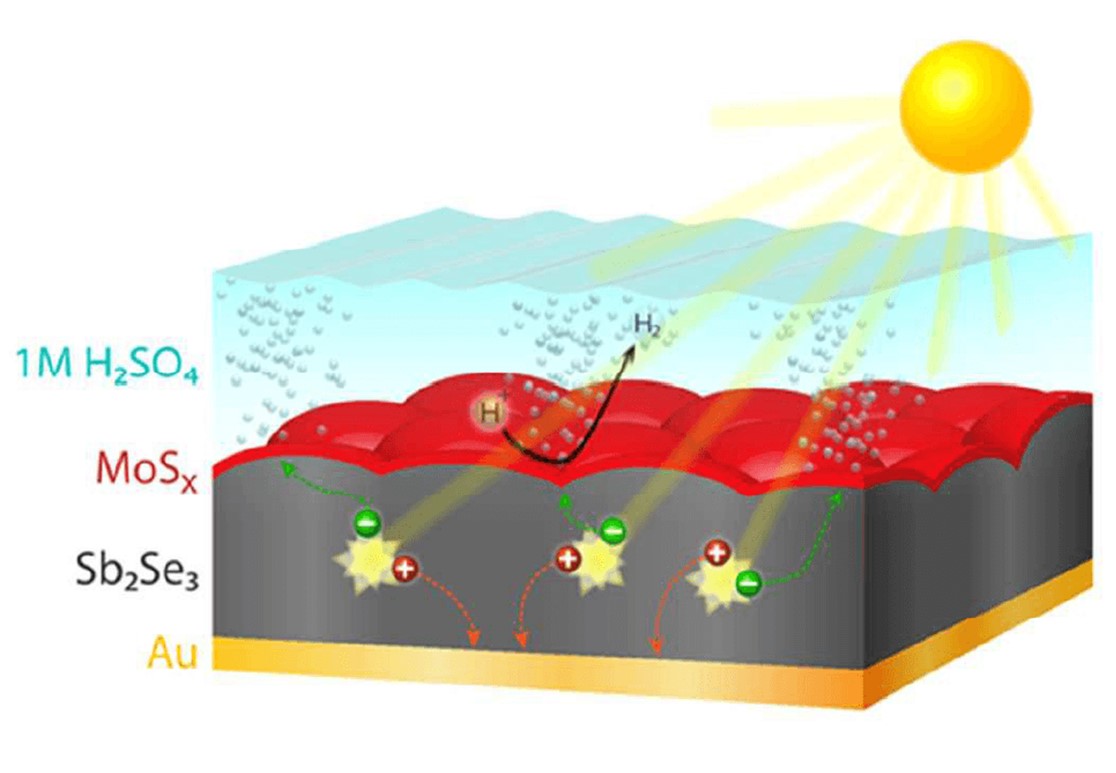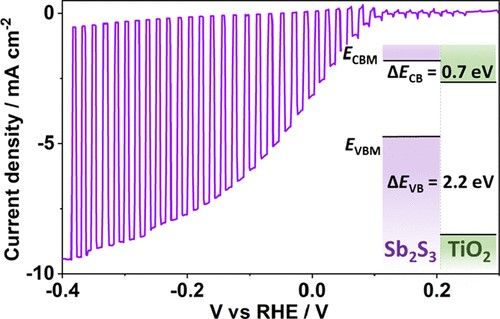Photoelectrochemical Water Splitting with Thin Film Semiconductors
Lead by Prof. David Tilley
We investigate “emerging” semiconductor-based materials for photoelectrochemical water splitting, with a focus on those materials comprised of Earth-abundant elements and fabricated using simple and scalable methods. We have targeted copper oxides (Cu2O and CuO) and copper sulfides (Cu2S) due to the abundance of copper and facile preparation methods. Another promising material of interest to us is antimony selenide (Sb2Se3), which we found is resistant to photocorrosion in acidic solutions under full solar illumination (Figure 1). It is therefore a strong candidate for a practical, scalable material for solar energy conversion devices, receiving much attention from researchers around the world.

We also recently reported another antimony-based light-absorbing semiconductor, antimony sulfide (Sb2S3). Using a TiO2 buffer layer and a platinum co-catalyst, a remarkable device performance was achieved by the Sb2S3 photocathodes for the first time (Figure 2). We hope that these efforts to explore and develop emerging light-absorbing materials pave the way for realizing the cost-effective production of chemical fuels from solar energy.
